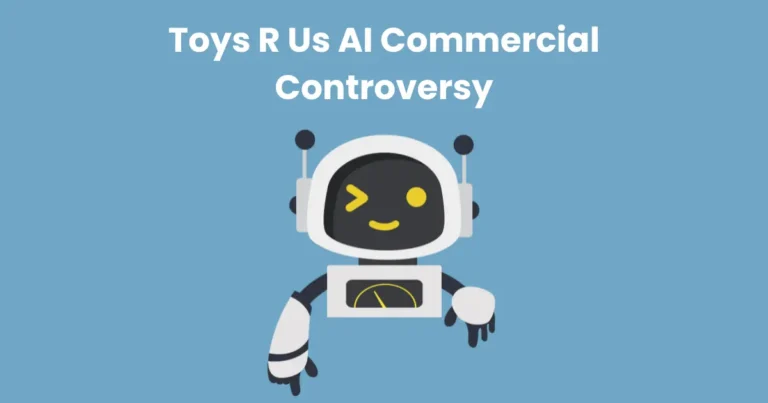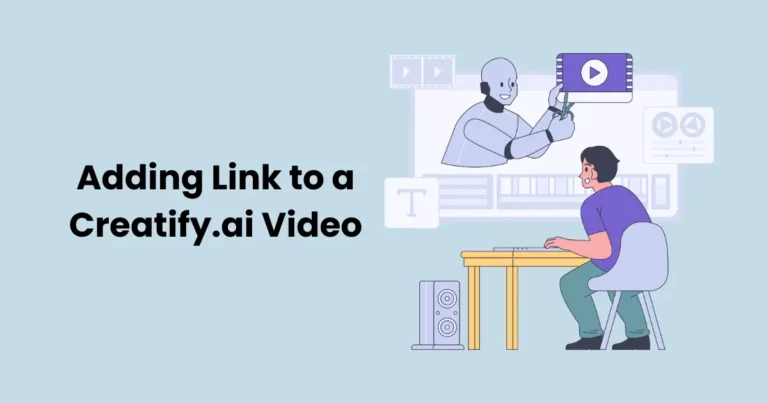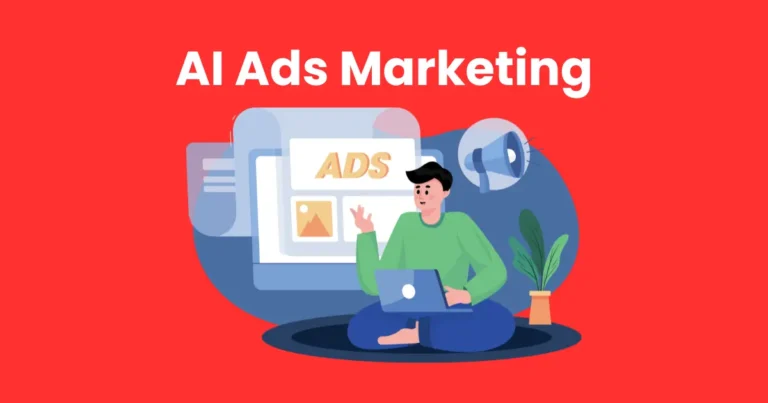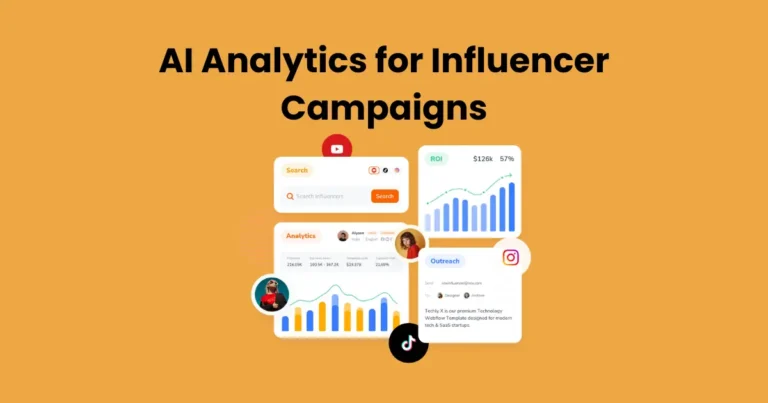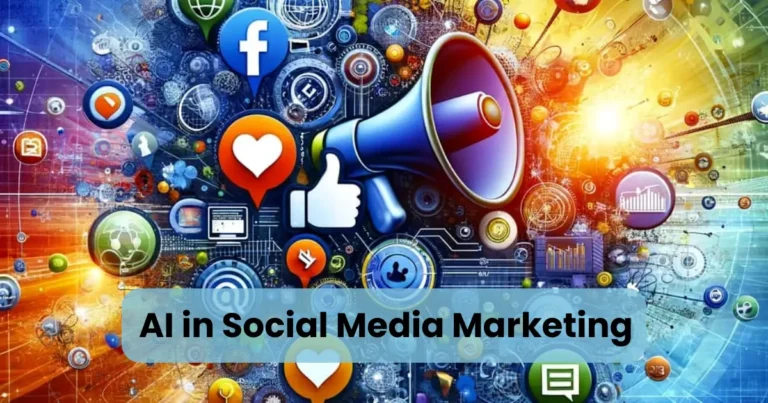Non-Skippable Ads | Best Practices for Non-Skippable Ads
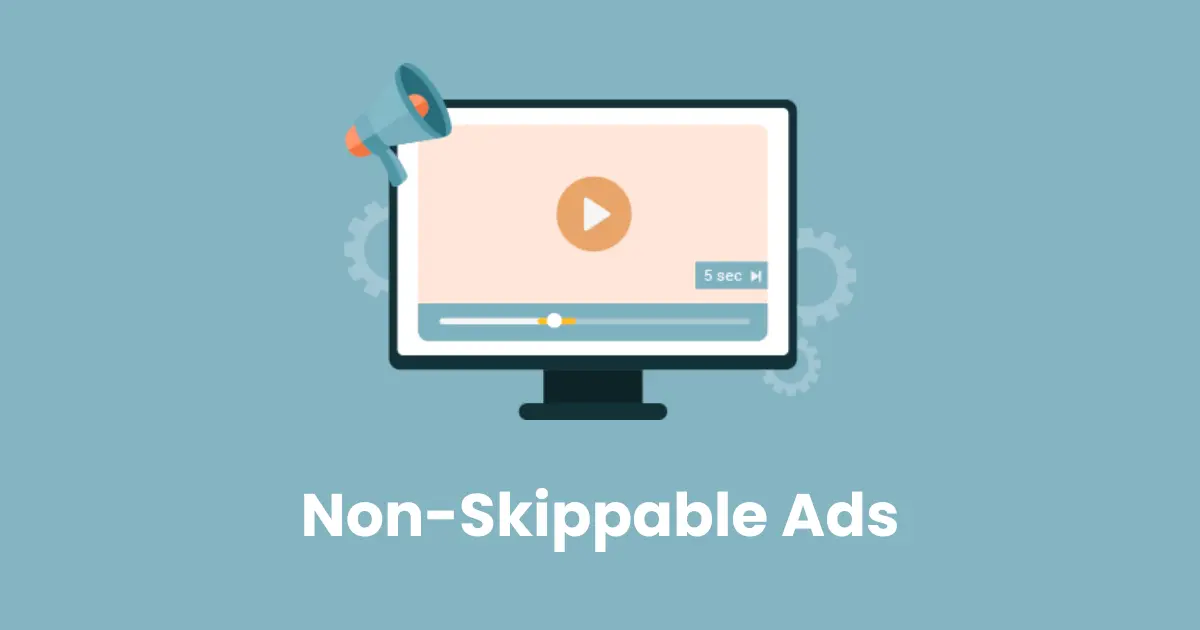
Contents
- 1 How Non-Skippable Ads Work
- 2 Benefits of Non-Skippable Ads
- 3 Drawbacks of Non-Skippable Ads
- 4 Best Practices for Non-Skippable Ads
- 4.1 1. Keep the Ad Short and Sweet
- 4.2 2. Focus on Strong Visuals and Audio
- 4.3 3. Target the Right Audience
- 4.4 4. Start with a Strong Hook
- 4.5 5. Prioritize Clear Messaging
- 4.6 6. Avoid Overloading the Viewer
- 4.7 7. Test and Optimize
- 4.8 8. Be Mindful of Frequency
- 4.9 9. Leverage Interactive Elements
- 4.10 10. Be Authentic
- 5 Non-Skippable Ads in Different Platforms
- 6 The Future of Non-Skippable Ads
- 6.1 1. Greater Integration with Interactive Content
- 6.2 2. Personalized and Data-Driven Ads
- 6.3 3. Enhanced Ad Formats with Augmented Reality (AR) and Virtual Reality (VR)
- 6.4 4. Shorter, More Impactful Ads
- 6.5 5. Increased Use of Non-Skippable Ads in New Channels
- 6.6 6. More Ethical and Consumer-Friendly Approaches
- 6.7 7. Voice Search and Voice-Activated Ads
- 6.8 8. Programmatic Advertising
- 6.9 Conclusion
Non-skippable ads are a powerful tool in digital marketing, offering a unique way to ensure full exposure of a brand’s message. Unlike skippable ads, these ads cannot be bypassed by viewers, ensuring that advertisers achieve maximum visibility. These ads are becoming increasingly popular among businesses aiming to enhance their brand presence and connect with audiences effectively. The significance of non-skippable ads lies in their ability to maintain viewer attention, making them a highly effective strategy in today’s competitive advertising landscape. In this article, we will explore the workings, benefits, drawbacks, and best practices for non-skippable ads, as well as their future in the digital advertising world.
How Non-Skippable Ads Work
These ads are designed to ensure that viewers watch the entire ad without the option to skip it. These ads are usually placed before, during, or after video content, ensuring advertisers get maximum exposure for their message.
Typically, these ads range from 15 to 30 seconds in length. This fixed duration helps advertisers maintain control over the amount of time viewers spend interacting with their content. These ads can be seen on various digital platforms, including video-sharing sites like YouTube, social media channels like Facebook and Instagram, and streaming services such as Hulu or Roku.
When a viewer watches a video that contains a non-skippable ad, the ad plays in full before the desired content begins. Since viewers are unable to bypass these ads, advertisers are guaranteed that their message will be fully viewed. This makes non-skippable ads a reliable and valuable format for campaigns that require complete attention from the audience.
Benefits of Non-Skippable Ads
Non-skippable ads offer numerous advantages for advertisers, making them an attractive option in digital marketing strategies. Below are some of the key benefits:

1. Higher Engagement Rates
One of the primary benefits of non-skippable ads is the increased engagement rate. Since viewers are unable to skip the ad, they are more likely to watch it in its entirety. This ensures that the brand’s message is delivered without interruption, which can lead to higher levels of interaction and brand recall.
2. Increased Brand Awareness
Non-skippable ads are highly effective in building brand awareness. When a viewer watches the ad from start to finish, they are more likely to remember the brand and the message it conveys. This uninterrupted exposure helps businesses reinforce their brand identity and maintain a strong presence in the minds of potential customers.
3. More Revenue Opportunities
Advertisers often pay a premium for non-skippable ads because they guarantee full viewership. This makes non-skippable ads a valuable revenue-generating tool for platforms that host video content. As a result, both advertisers and platforms benefit from the increased revenue potential that these ads provide. For advertisers, it means greater visibility, while platforms enjoy higher ad rates due to the guaranteed engagement.
4. Better Message Retention
With non-skippable ads, viewers are required to watch the full advertisement, which significantly increases message retention. This is particularly important for campaigns focused on brand awareness, as viewers are more likely to remember the brand or product after seeing the complete ad. Unlike skippable ads, where viewers may skip parts of the content, non-skippable ads ensure the entire message is delivered.
5. Control Over Ad Delivery
Non-skippable ads offer advertisers more control over how their message is delivered. Since the viewer cannot skip the ad, advertisers can ensure that their content is seen exactly as intended. This level of control is beneficial when delivering key brand messages or launching time-sensitive promotions. The ability to dictate the full duration of the ad allows for a more targeted and impactful campaign.
In conclusion, these ads provide a valuable tool for advertisers looking to maximize engagement, build brand awareness, and increase revenue. Their ability to ensure full viewership and message retention makes them an essential part of many digital marketing strategies.
Drawbacks of Non-Skippable Ads
While non-skippable ads offer several advantages, they also come with notable drawbacks that can impact both advertisers and viewers. Understanding these challenges is crucial to utilizing these ads effectively.

1. User Experience Challenges
Non-skippable ads can negatively affect the user experience, especially if they are perceived as disruptive. Viewers may become frustrated when they are forced to watch an ad they have no control over. This can lead to a decrease in user satisfaction, particularly if the ad is long or irrelevant. In a digital environment where viewers expect personalized, seamless experiences, these ads can feel intrusive, potentially causing users to abandon the platform or content.
2. Impact on Viewer Retention
While non-skippable ads guarantee full viewership, they can also impact overall viewer retention. Long or poorly executed ads may cause viewers to leave the platform altogether or stop watching content they initially intended to enjoy. If the ad disrupts the viewer’s experience too much, it may result in negative feelings towards the brand or platform, reducing the likelihood of continued engagement.
3. Potential for Negative Reception
Repeated exposure to non-skippable ads can lead to a negative reception from audiences. If viewers frequently encounter ads that interrupt their viewing experience, they may grow resentful of the brand or platform. This can lead to a rise in ad fatigue, where audiences become less responsive to non-skippable ads over time. In extreme cases, viewers may seek out alternative platforms or services that offer fewer ads, which could negatively impact both the advertiser’s and the platform’s bottom line.
4. Limited Ad Variety
Non-skippable ads tend to have a fixed length, often ranging between 15 to 30 seconds. This limited duration can restrict the creativity of advertisers. Brands may struggle to effectively communicate their message within such a tight timeframe, particularly for complex products or services that require more detailed explanations. This restriction may hinder advertisers from fully utilizing the format to its potential.
5. Potential for Ad Blindness
Over time, viewers may become desensitized to non-skippable ads, a phenomenon known as ad blindness. When viewers encounter too many ads in a short period, their ability to focus on or engage with the message diminishes. Although these ads guarantee visibility, this repeated exposure may have diminishing returns, reducing the overall effectiveness of the campaign.
These ads offer guaranteed exposure and increased brand visibility, they also present challenges that can negatively impact user experience, viewer retention, and brand perception. Advertisers should carefully balance the benefits with the potential drawbacks to ensure that their non-skippable ad campaigns achieve the desired results without alienating their audience.
Best Practices for Non-Skippable Ads
To make the most of non-skippable ads and avoid their potential drawbacks, advertisers must follow best practices that enhance the effectiveness of their campaigns while maintaining a positive user experience.

1. Keep the Ad Short and Sweet
The length of a non-skippable ad is critical. While these ads can be as long as 30 seconds, it’s best to keep them as concise as possible while still delivering your core message. A short, attention-grabbing ad is more likely to hold viewers’ attention and reduce the chances of them becoming frustrated. The ideal length for a non-skippable ad is typically between 15 to 20 seconds, which is enough to convey the message without overstaying its welcome.
2. Focus on Strong Visuals and Audio
Because non-skippable ads demand the viewer’s full attention, it’s essential to make the content visually engaging from the very beginning. Use high-quality visuals, vibrant colors, and dynamic shots to catch the viewer’s eye. Combine this with a compelling soundtrack or voiceover to ensure that the viewer stays engaged throughout the ad. The combination of strong visuals and audio can create a more memorable and impactful ad experience.
3. Target the Right Audience
Targeting is crucial when it comes to non-skippable ads. The more relevant the ad is to the viewer, the more likely it is to be well-received. Use data-driven insights to target specific demographics or interests that align with your brand. By delivering your message to the right audience, you increase the chances of the ad being seen in a positive light, reducing the risk of irritation from irrelevant content.
4. Start with a Strong Hook
In non-skippable ads, it’s essential to capture attention right from the start. Viewers often have little patience for slow introductions, so begin with a hook that immediately sparks curiosity or excitement. A strong opening can create intrigue and motivate the viewer to continue watching the entire ad. Whether it’s an emotional appeal, a humorous moment, or a surprising fact, make sure the first few seconds captivate the viewer.
5. Prioritize Clear Messaging
With limited time to deliver your message, clarity is key. Ensure that the ad’s main point is immediately clear and easily understood. Avoid using too much jargon or overcomplicating the message. A clear, concise call-to-action (CTA) is essential—tell viewers exactly what you want them to do after watching the ad, whether it’s visiting your website, making a purchase, or learning more about your brand.
6. Avoid Overloading the Viewer
While it’s tempting to pack as much information as possible into a non-skippable ad, doing so can overwhelm the viewer. Instead, focus on one key message and ensure that it’s communicated effectively. Too many details or complex concepts can cause the viewer to lose interest. Keep the ad simple and focused to maximize its impact.
7. Test and Optimize
Even with the best practices in place, not all ads will perform the same. It’s crucial to test different versions of your non-skippable ads to see what resonates best with your audience. Experiment with various lengths, visuals, audio, and messaging to determine which combinations lead to the highest engagement. Use the insights gained from these tests to optimize future campaigns.
8. Be Mindful of Frequency
Avoid overexposing your audience to the same non-skippable ads. Seeing the same ad too often can lead to ad fatigue and annoyance, potentially damaging the viewer’s perception of your brand. Set frequency caps to ensure that viewers aren’t overwhelmed by repeated exposure, and try to vary your creative to keep the experience fresh and engaging.
9. Leverage Interactive Elements
Some platforms allow for interactive elements in non-skippable ads, such as clickable links, polls, or product showcases. These features can enhance the user experience by offering viewers more control and encouraging them to engage with your ad. Interactive elements also make the ad feel less like a traditional commercial and more like an immersive experience, which can improve viewer reception.
10. Be Authentic
Finally, authenticity is crucial in non-skippable ads. Viewers are increasingly drawn to ads that feel genuine and align with their values. Avoid overly polished, insincere content and focus on creating ads that resonate with your target audience on a deeper level. Whether through storytelling, humor, or emotional appeal, authentic ads tend to build stronger connections with viewers.
By following these best practices, advertisers can maximize the effectiveness of their non-skippable ads while maintaining a positive experience for viewers. A well-crafted ad can significantly boost brand awareness, engagement, and customer loyalty, making it an invaluable tool in any digital marketing strategy.
Non-Skippable Ads in Different Platforms
Non-skippable ads are used across a wide variety of digital platforms, each offering unique features and targeting options. Understanding how non-skippable ads function on different platforms is essential for advertisers to tailor their campaigns effectively.

1. YouTube
YouTube is one of the largest platforms for video content, and non-skippable ads play a significant role in its ad offerings. On YouTube, these ads can appear before, during, or after a video.
- Pre-Roll Ads: These are ads that play before the main video content begins. They are typically 15 to 30 seconds long, and viewers cannot skip them. These ads are an excellent way to capture a viewer’s attention right from the start.
- Mid-Roll Ads: Mid-roll ads play during the video and typically appear after the first few minutes of content. These ads work best for longer videos and are often inserted by the content creator or the platform itself.
- Bumper Ads: These are very short, non-skippable ads (usually 6 seconds) that play before a video. Bumper ads are designed to quickly deliver a brand message and are ideal for building brand awareness.
YouTube provides detailed targeting options, including demographic, geographic, and interest-based targeting, making it a highly effective platform for advertisers to reach specific audiences with these ads.
2. Facebook and Instagram
Both Facebook and Instagram allow advertisers to place non-skippable video ads that appear in users’ news feeds, stories, and even in between videos on IGTV.
- Feed Ads: These ads appear directly in a user’s news feed and play automatically without the option to skip. Advertisers can use these to reach users during their scrolling sessions. The key is to capture attention in the first few seconds, as users tend to scroll quickly.
- Instagram Stories Ads: These full-screen vertical ads appear between users’ Stories. They cannot be skipped, ensuring that viewers see the entire ad. Instagram also allows advertisers to include swipe-up links, making it easy to drive traffic to websites or landing pages.
- In-Stream Video Ads: These ads appear within Facebook videos (similar to YouTube’s mid-roll ads). They are typically 10 to 15 seconds long and cannot be skipped. In-stream ads are shown to users who have actively engaged with video content, allowing for highly targeted advertising.
Facebook and Instagram offer advanced targeting features, such as lookalike audiences and behavior-based targeting, which help advertisers connect with the right people for their non-skippable ads.
3. Hulu
Hulu, a popular streaming service, offers non-skippable ads as part of its advertising model for users on the ad-supported plan.
- Ad-Supported Plan: Users of Hulu’s ad-supported plan will see these ads before and during content. These ads typically range from 15 to 30 seconds and are strategically placed at natural breaks in the content.
- Live TV Ads: For users watching live TV through Hulu, non-skippable ads may also appear during commercial breaks. Hulu uses viewer data to target ads based on user preferences and viewing history.
4. Spotify
Spotify is a leading music streaming service that uses these ads in its free-tier model. These ads appear between songs or during breaks in the playlist.
- Audio Ads: Non-skippable audio ads are often inserted during natural pauses between songs, typically lasting 30 seconds to one minute. These ads guarantee full engagement, as listeners cannot skip them.
- Display Ads: Spotify also uses non-skippable display ads, which show up as banners or videos in between music tracks. These ads are an effective way to reach Spotify users who are actively listening to music, ensuring exposure to the audience.
Spotify offers precise demographic and behavioral targeting, which helps advertisers reach listeners based on their musical tastes, location, and more.
5. Snapchat
Snapchat allows advertisers to create non-skippable video ads that appear in users’ stories or between their friends’ posts.
- Snap Ads: These are short, vertical video ads that appear within users’ Snapchat stories. They are typically 6 to 10 seconds long and cannot be skipped. Users are prompted to engage with the ad by swiping up to visit a website, watch a video, or learn more about the brand.
- Commercials: Snapchat’s non-skippable commercials are typically placed within curated Discover content. These ads can last up to 6 seconds and provide advertisers with a highly targeted reach, given Snapchat’s young user base.
6. TikTok
TikTok has rapidly become one of the most engaging platforms for video content, and its non-skippable ads are a central feature of the platform’s advertising options.
- In-Feed Ads: These full-screen video ads appear in users’ For You feeds and play automatically. While TikTok ads are usually skippable, advertisers can work within TikTok’s ad guidelines to create immersive, engaging content that captures attention quickly.
- Branded Hashtag Challenges: These ads encourage users to participate in challenges and share content related to a brand’s campaign. Although users can skip the ads, the engagement and viral nature of TikTok’s format make it a highly effective way to increase brand visibility.
TikTok’s advanced targeting, paired with its highly engaged user base, makes it an excellent platform for non-skippable ads that create brand awareness.
7. Connected TV (CTV) and Over-the-Top (OTT) Platforms
These ads are also becoming more prevalent in connected TV (CTV) and over-the-top (OTT) services such as Roku, Amazon Fire TV, and Apple TV.
- Roku Ads: Roku offers non-skippable video ads for its users on ad-supported streaming services. These ads appear before, during, or after a show or movie and are typically 15 to 30 seconds long.
- Amazon Fire TV and Apple TV Ads: Similar to Roku, these platforms offer non-skippable ads within the streaming content. As viewers have limited control over skipping ads, advertisers enjoy guaranteed visibility and engagement.
These platforms offer an excellent opportunity for advertisers to engage viewers in a less crowded, more immersive environment, where the focus is solely on the content being consumed.
The Future of Non-Skippable Ads
As digital advertising continues to evolve, non-skippable ads are expected to play a larger role in shaping the way brands reach their target audiences. With the ever-increasing use of ad-blocking software and viewers’ growing impatience with irrelevant or intrusive ads, the future of non-skippable ads must adapt to meet the needs of both advertisers and consumers. The following trends highlight how these ads are likely to evolve in the coming years.

1. Greater Integration with Interactive Content
One of the most exciting developments in the future of non-skippable ads is the rise of interactive content. Rather than simply forcing viewers to watch an ad, brands will find ways to incorporate interactivity into their ads. This could include clickable features, polls, quizzes, or mini-games that allow viewers to engage with the ad, making it feel less intrusive and more like part of the content experience.
Platforms like YouTube and Facebook are already experimenting with interactive elements, and in the future, these ads could become more sophisticated. By integrating interactive elements into non-skippable ads, advertisers will be able to engage consumers on a deeper level, encouraging them to not only watch but also interact with the brand.
2. Personalized and Data-Driven Ads
The use of big data and AI will continue to drive personalized advertising in the future. These ads will be increasingly tailored to individual viewers based on their preferences, behaviors, and demographic information. Through advanced targeting techniques, brands will be able to deliver these ads that are more relevant to the viewer, increasing the chances of positive engagement.
Platforms like YouTube and TikTok already use sophisticated algorithms to deliver targeted ads, but as AI technology advances, the ads will become even more personalized. For example, an ad for a new car model could feature a vehicle that aligns with the viewer’s past searches, social media activity, or even the music they listen to.
3. Enhanced Ad Formats with Augmented Reality (AR) and Virtual Reality (VR)
With the growth of immersive technologies like AR and VR, non-skippable ads are likely to become more immersive as well. In the future, advertisers may incorporate these technologies to create fully interactive, 3D experiences within non-skippable ads. This could transform static ads into fully immersive experiences where viewers can explore products or interact with brand storytelling in new ways.
For example, a car company might use AR to let viewers virtually explore the interior of a car in a non-skippable ad, or a fashion brand could use VR to transport viewers to a runway show. By creating ads that integrate AR and VR, brands can captivate consumers in ways that go beyond the traditional video format.
4. Shorter, More Impactful Ads
As attention spans continue to shrink, the trend toward shorter non-skippable ads is expected to grow. While traditional non-skippable ads have typically ranged from 15 to 30 seconds, the future may see an increase in ultra-short, punchy ads that deliver their message in just a few seconds.
Platforms like YouTube and Instagram already support short-form content, and advertisers are likely to embrace this by creating highly impactful, brief non-skippable ads. These ads will need to be even more creative to grab attention quickly and deliver a strong message in a limited amount of time.
5. Increased Use of Non-Skippable Ads in New Channels
As new digital platforms and channels emerge, the use of non-skippable ads will expand into areas beyond traditional video-sharing platforms. Social media networks, gaming platforms, smart TV apps, and streaming services will likely continue to experiment with non-skippable ad formats.
For instance, in-game advertising is expected to grow rapidly, with non-skippable ads being integrated into video games. These ads could appear as part of the gaming experience, such as a billboard within a racing game or a brand integration within a sports game. By blending advertising with entertainment, non-skippable ads in gaming could become a major new revenue stream for advertisers.
6. More Ethical and Consumer-Friendly Approaches
The future of these ads is also likely to be shaped by a greater emphasis on consumer satisfaction and ethical advertising practices. With privacy concerns and ad fatigue at an all-time high, brands will need to ensure that their non-skippable ads are respectful of viewers’ time and preferences.
In the future, advertisers may adopt more transparent and ethical practices, such as giving viewers the option to choose the type of ads they want to see, or allowing them to earn rewards in exchange for watching non-skippable ads. For example, a viewer might be offered exclusive content, discounts, or access to premium services in exchange for engaging with a non-skippable ad.
7. Voice Search and Voice-Activated Ads
With the increasing popularity of voice-activated devices like Amazon Alexa, Google Assistant, and Apple Siri, non-skippable ads may extend to the voice-first world. Advertisers could explore new ways to deliver non-skippable audio ads through smart speakers and voice assistants. These ads could play before users access their desired content or as part of a personalized interaction.
For example, users might hear a non-skippable ad when asking their voice assistant to play a song or read the news. By integrating voice-activated advertising, brands can reach consumers in a new, non-disruptive way.
8. Programmatic Advertising
Programmatic advertising is expected to continue growing, allowing advertisers to automatically buy and place non-skippable ads in real-time. This technology uses data to ensure that ads are placed in the right context, targeting the right audience at the right time. As more platforms embrace programmatic ad buying, these ads will become more dynamic and adaptable, ensuring that advertisers can reach their target audiences with greater precision and efficiency.
Conclusion
Non-skippable ads have emerged as a powerful tool for advertisers, offering a way to ensure their message reaches viewers without the option to skip. While these ads have their benefits, such as increased engagement and brand visibility, they also come with challenges like viewer frustration and the need for more creative, impactful content. However, the future of these ads looks promising with trends like personalization, interactive content, and the integration of emerging technologies like AR and VR.
As the digital landscape evolves, advertisers will need to adapt their strategies to provide more consumer-friendly, engaging experiences, ensuring that non-skippable ads remain a relevant and effective form of advertising. By embracing innovation and focusing on quality, brands can maximize the potential of non-skippable ads while maintaining a positive relationship with their audience.


